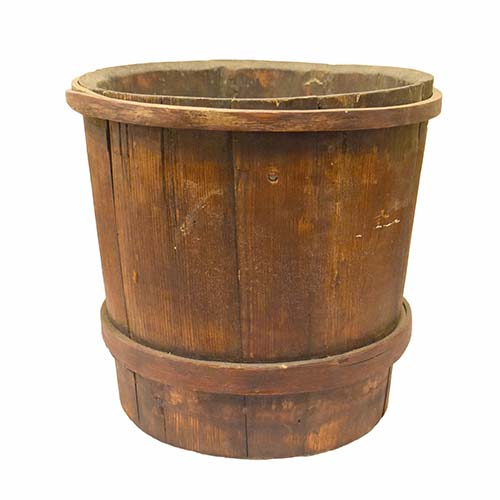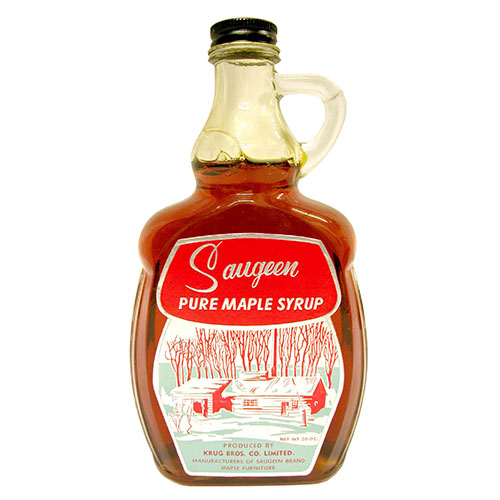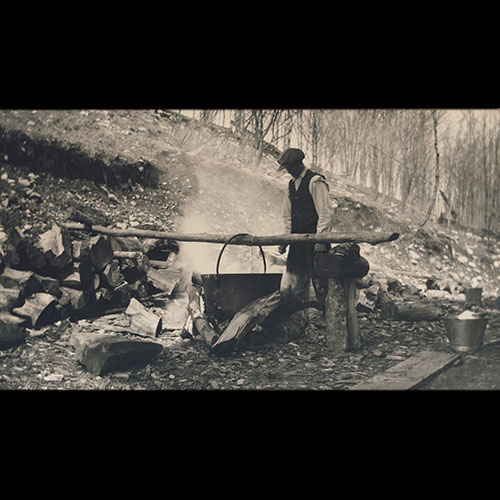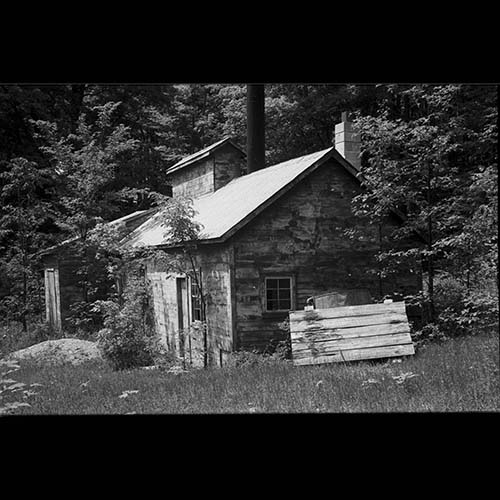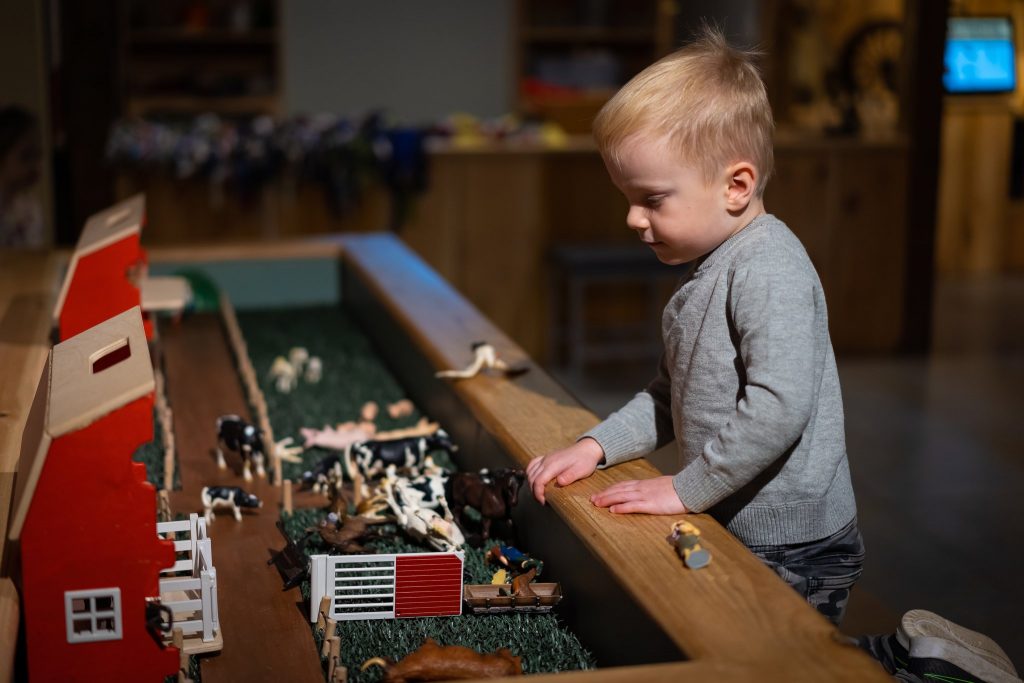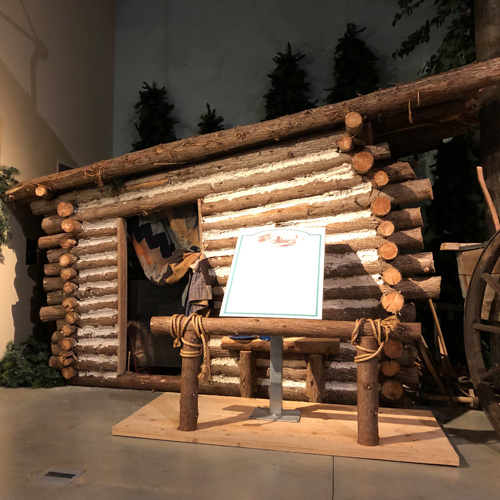Bruce’s early settlers were resourceful and made the most of what they had. In the early days, as land had to be cleared, all settlers had plenty of trees within their lots, including sugar maples. Being resourceful, early settlers tapped these trees when the sap was running and began the tradition of maple syrup in Bruce.
Once the sap was established to be running in the spring months, syrup camps were set up. These usually consisted of three large kettles strung over a very large open fire. The person designated to be the ‘boiler’ was required to continuously move the boiling sap from one kettle to another as the sap would boil down, while another would gather full sap buckets and empty them into a larger one near the fire for the ‘boiler’. Debris would also be picked out by the ‘boiler’. If one wanted to make maple sugar, the temperature needed to be just right, and then the boiling sap was poured into small containers such as tart tins. When cooled it made a cake of sugar. In the early days, maple sugar could be purchased for 1.5 cents per pound, versus white sugar which sold for $2.50-$3.00 per pound. According to the author of “The Queen’s Bush: A Tale of the Early Days in Bruce County”, Dr. W.M. Brown, not only was maple sugar sweeter than white sugar, but it was also healthier.
We can see from diaries found within the archival collection, such as that of Cecil Swale, who farmed in Amabel Township near Boat Lake, dated 1904, maple syrup was still something Bruce’s farmers did during the early spring months in the early 20th century. Cecil notes that season he made roughly 50 gallons of syrup.
Commercial Ventures
By the early 20th century maple syrup had become a lucrative business for some Bruce farmers. Bert Jackson, in his book “Memories of a Huron-Bruce Farm Boy (1896-1986)” describes the maple syrup operation on his family’s farm. As they had 1000 Canadian Hard Maples, they decided to take advantage of them. In the beginning they used several kettles, but then they purchased an evaporator. Evaporators could be operated indoors and would produce as much syrup in one day as they could in one week of boiling. To house the evaporator a permanent structure was built. The evaporator had another advantage over traditional boiling – it could make syrup at a certain weight per gallon. This weight was needed to market the product as pure maple syrup. Maple Hill Farms was the name of the Jackson’s syrup and they sold it in 1912 for $1.50 per gallon.
The Krugs were another family that took the opportunity to commercially make maple syrup, taking advantage of their maple woodlots, and production began in 1918 using the name Saugeen Pure Maple syrup. They also made use of an evaporator and used an old logging camp building to house it as well as the canning operation. In 1919 it was a 2800 bucket operation. Found in the collection is a 1942 survey for the Bureau of Statistics – during the Second World War, maple products fille the roll of granulated sugar, so surveys were sent to manufacturers. That year, they produced 430 gallons of syrup for $2.53 per gallon. According to their notes, that year the sap was weak, and over a 12-hour period only got one gallon of syrup from 90 gallons of sap. In the early 1950s there was an outbreak of tent caterpillars which stripped the maples of their foliage. Syrup production was cancelled for those years and several after, allowing the trees to recover. Production began again in the 1960s, with the last year of production being 1963. Seen here is an advertisement from a Krug Bros. Limited catalogue for their syrup.
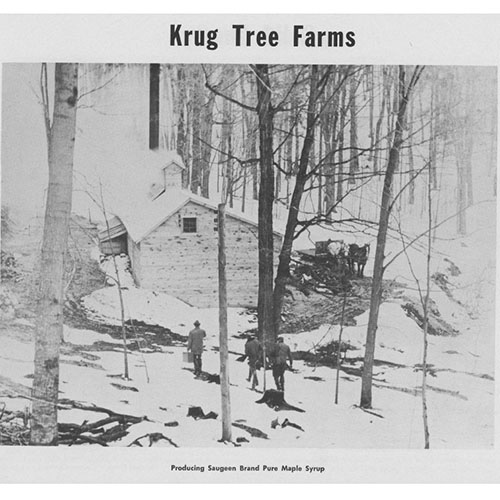
A Taste of Home
Mentioned often in letters found within the archives are those from soldiers thanking different organizations for the care packages they received while serving overseas. A letter from Sergeant H. Nuttall dated July 12, 1944, to the ladies of the Euchre/Crokinole Club of Bruce Township thanks them for their care package as they had been living on stew and hard biscuits since they left England, so the box was a real treat, and that he shared with members of his tank crew – some of which had never had maple syrup before. Another letter, from Sapper J.E. McLeod, also dated from July of 1944, says “But what a real rare treat was the maple syrup, not only was I thrilled, but three other Sapper pals of mine, whom I had invited to join me, really considered it a very special treat. Your club deserves much credit, in your choice of articles which you sent, they were all just what we do like to get.”. Not only were maple products being used as a substitute for sugar products on the home front, but maple syrup was also hoisting the morale of Bruce’s troops overseas.
Maple Syrup Festivals
Maple syrup festivals are also a long-standing tradition in Bruce County. Though there are several the most popular are in Purple Valley and Belmore. Recent ones include Maple Magic put on by the Wiarton Rotary, and the one put on at Saugeen Bluffs by the Saugeen Valley Conservation Authority. Photos from the Krug Fonds show that the maple syrup festivals were a time to get together and to celebrate the coming of spring. Aside from the pancake breakfasts, and maple syrup making demonstrations, these festivals historically have hosted other events such as craft shows, dances, pancake flipping contests, square dancing and clogging demonstrations, pony rides, face painting, turkeys shoots and at the Purple Valley festival, a greased pig contest, where contestants had to catch a greased pig in a bag. The winner got to take home the pig. The popularity of these festivals, both started in 1968 continues to grow. Early numbers for the festivals were around 1500 to 1800 people. According to the Belmore Maple Syrup Festival website (http://www.belmorecommunitycentre.ca/belmore-maple-syrup-festival.html), the 2010 festival served approximately 6570 people.

